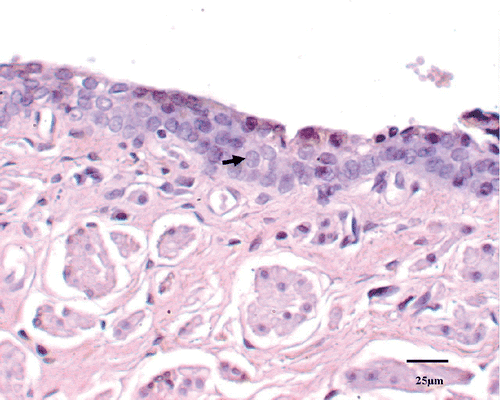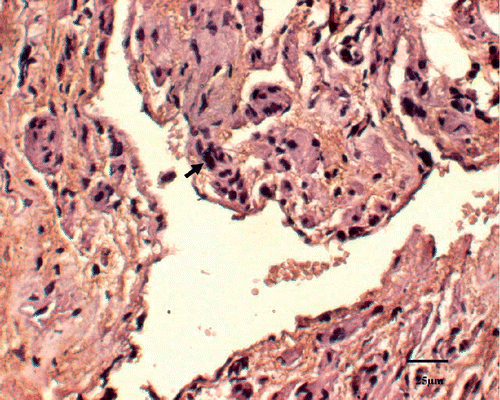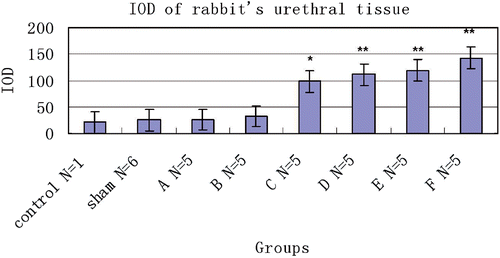Figures & data
Figure 1. The electrode (–) was advanced into the penial parenchyma along its long axis. The real-time temperature monitoring thermocouple sensor (- - -) was placed parallel into the urethra (△). Correspondence of the tip of needle to the head of thermocouple sensor was assured.
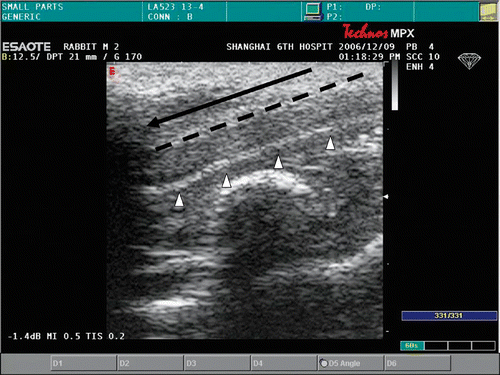
Table I. Measured parameters of rabbits during experiment.
Figure 2. The histological section showed the urethral mucosa and submucosa tissue surrounding the urethra were displayed clearly in control tissue (▴). The intact cell is characterized by round to oval nuclei with delicately stippled chromatin, preserved spindled cell shape without cytoplasmic retraction, and pale eosinophilic cytoplasm (↑).
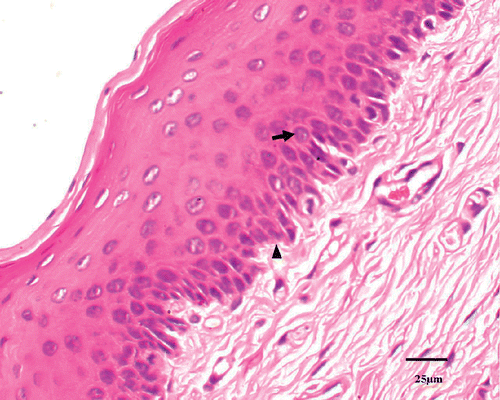
Figure 3. Coagulative necrosis is characterized by indistinct cellular detail with relatively preserved tissue structure, including pyknotic to karyorectic nuclei and shrunken hypereosinophilic cytoplasm (↑).
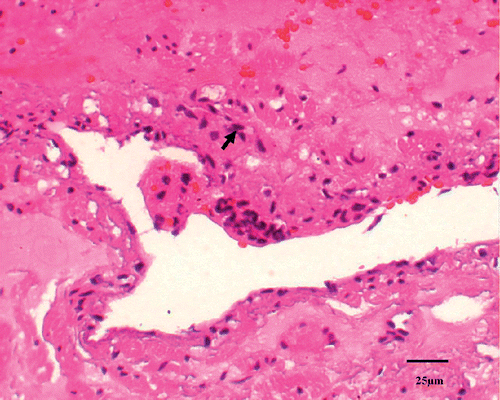
Figure 4. Mean necrosis percentages measured histologically in control (N = 1), sham-treated (N = 6) and RF-treated groups (N = 5/group). Also shown are results from untreated control animal (N = 1) for comparison. **P < 0.01.
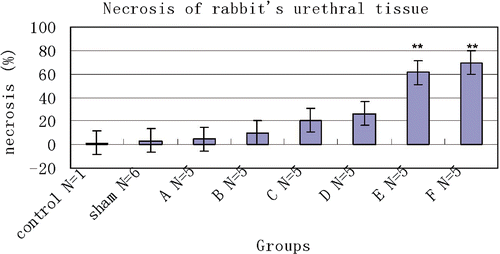
Table II. Necrosis and IOD of urethral tissue with different temperature after RFA.
Figure 5. TUNEL staining on the samples demonstrated absence of apoptotic cells in the normal tissue. The intact cell is characterized by round to oval nuclei without TUNEL-stained chromatin (↑).
